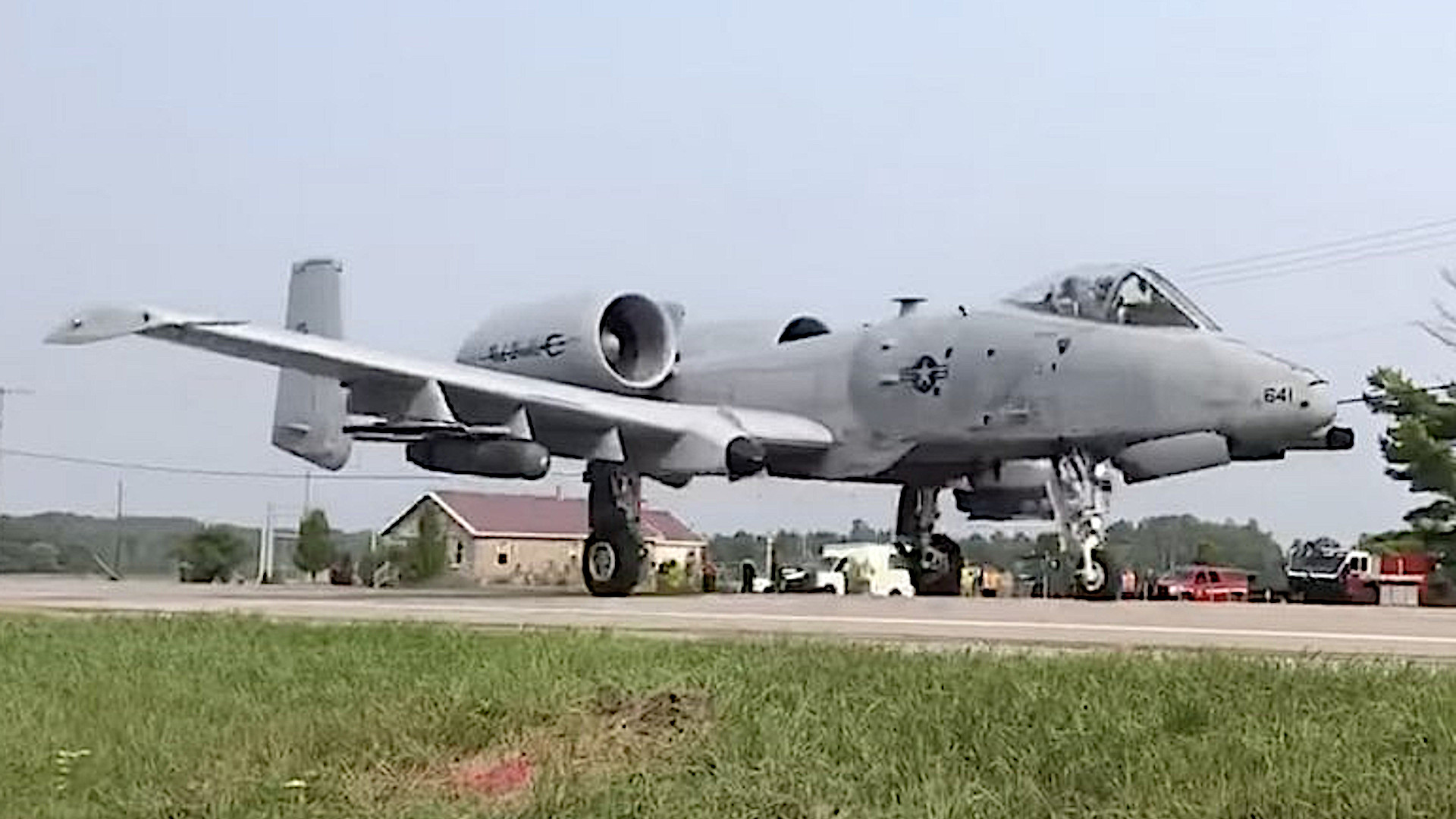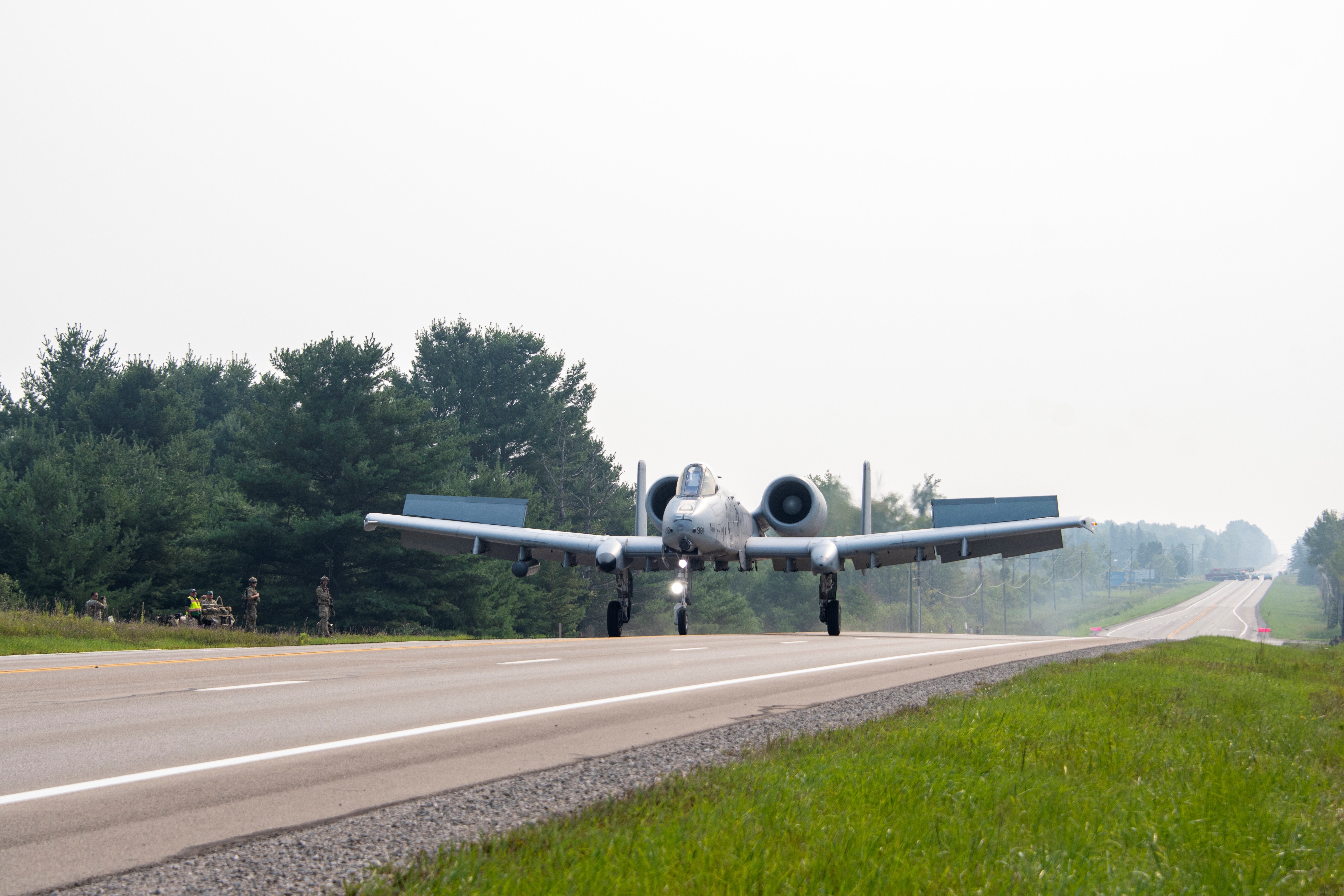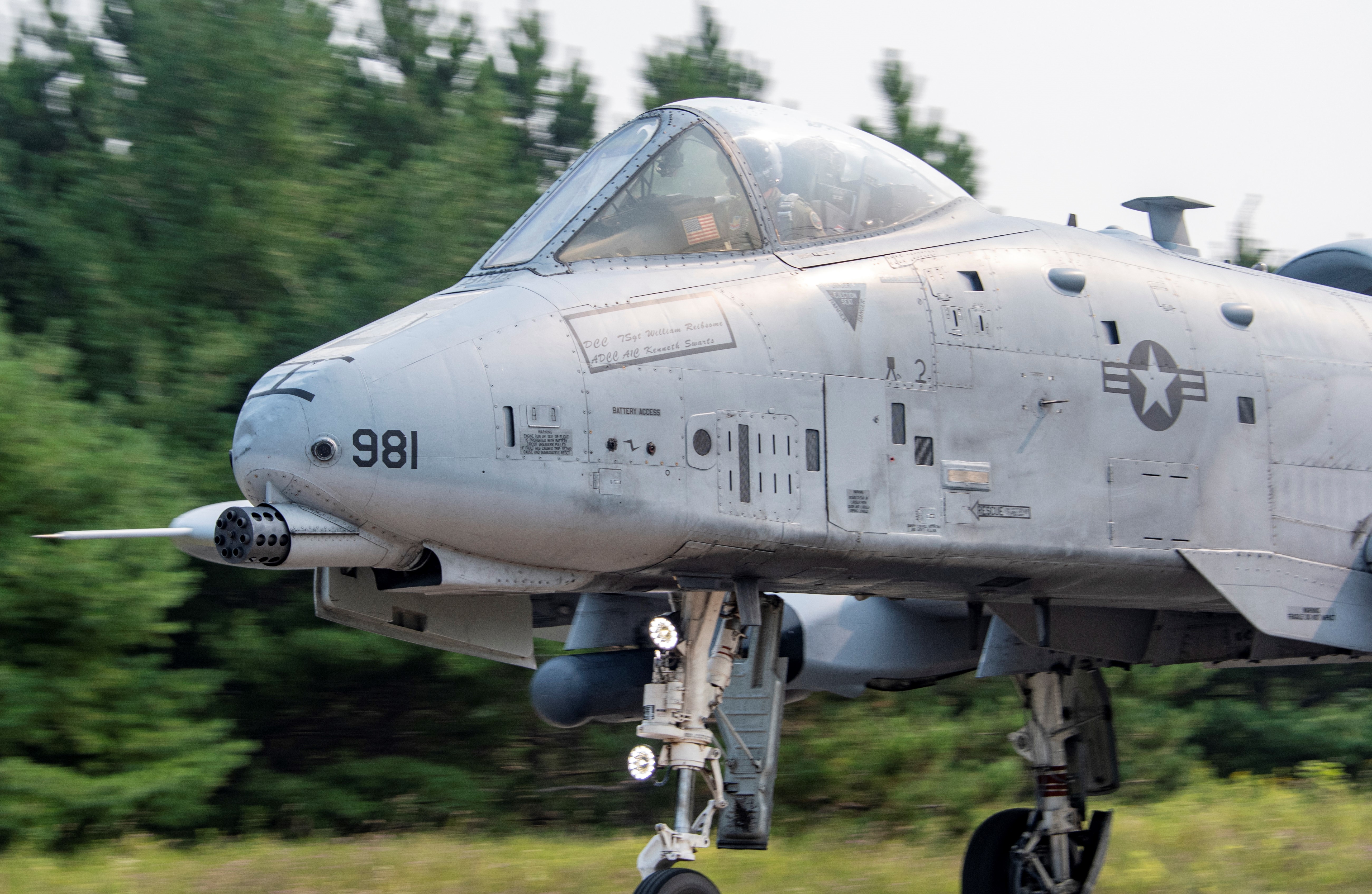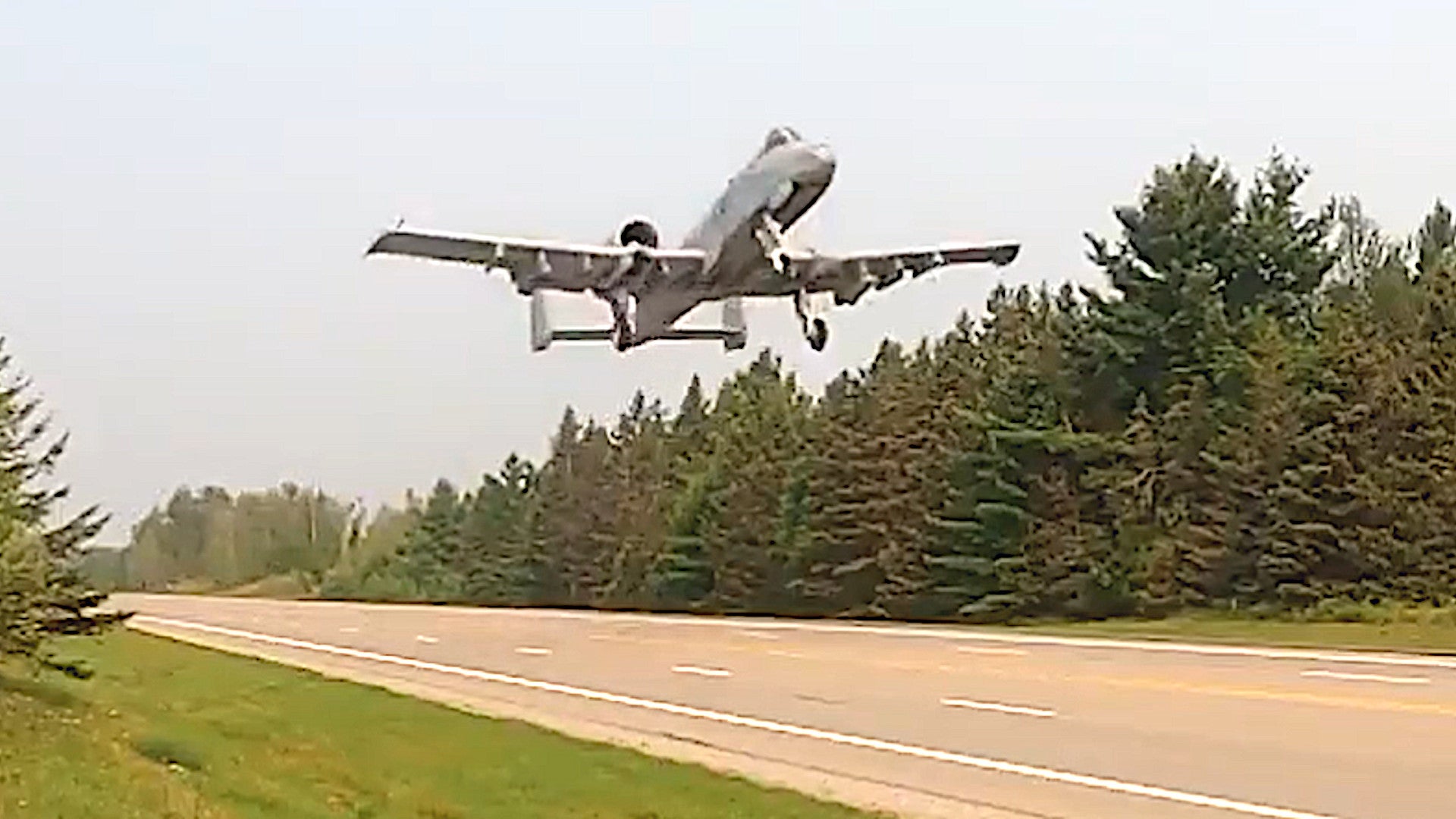Four U.S. Air Force A-10C Warthog attack jets have been operating from a strip of highway in Michigan today as part of a unique road-operations drill, the first time this has been done in the United States, at least as far back as anyone can remember. The event, which also involves C-146A Wolfhound special operations transports, is part of a renewed focus on dispersed operations, which would be expected to play a central role in any future peer conflict. You can read more about this unique training event in The War Zone’s initial reporting ahead of this exercise.
Videos posted online today by the Michigan Air National Guard’s 127th Wing and the Michigan Department of Transportation (MDOT) show A-10s and C-146s landing on and taking off from a stretch of the Michigan State Highway M-32 near Alpena. The highway was expected to be closed off to traffic for five hours to allow the A-10s and C-146s to operate there. The drills are being organized by the Michigan Air National Guard and are taking place as part of the wider Exercise Northern Strike 21-2.

In addition to the A-10Cs from the 127th Wing, which is stationed at Selfridge Air National Guard Base, personnel from the active-duty 355th Wing, based at Davis-Monthan Air Force Base in Arizona, are also taking part in the highway drills. The C-146As, meanwhile, come from the Air Force Special Operations Command (AFSOC) at Duke Field in Florida.
The Michigan State Highway M-32 is well placed for these activities, being just around the corner from the Alpena Combat Readiness Training Center, which is also being used to support Northern Strike 21-2.
It also makes sense for the Michigan Air National Guard to be running the highway portion of the exercise, since its 107th Fighter Squadron has accumulated plenty of experience in these kinds of austere operations during successive deployments from highways in Estonia.
Michigan Air National Guard A-10s operate from an abandoned runway in Estonia, in 2018:

As we have explored in the past, there is renewed interest within the Air Force, as a whole, in using austere airstrips, as a way of reducing reliance on potentially vulnerable established airbases, of the kinds that would likely be prime targets in any major peer conflict in Europe or the Pacific. During the Cold War, of course, flying from highways and other improvised locations had been a fundamental part of how the A-10 was expected to survive in a high-threat environment in central Europe.
All told, while seeing these jets, and other Air Force aircraft, operate from a closed-off portion of a U.S. highway might seem like something of a novelty, the continuing changes to the Air Force’s concepts of operations mean that they could well become a more common feature of Stateside exercises in the future.

Update, 2:30 pm PST: The Air Force has published additional details about today’s highway exercise, involving two A-10s from the Michigan Air National Guard’s 127th Wing and two from the 354th Fighter Squadron at Davis-Monthan Air Force Base, Arizona. We now have confirmation that this was “the first time in history that the Air Force has purposely landed modern aircraft on a civilian roadway in the U.S.”
The participation of the 355th Wing is described as having been part of the unit’s “continued effort to refine its Agile Combat Employment capabilities and Dynamic Wing concept, which improve its airmen’s ability to operate from austere locations with limited infrastructure and personnel.”

“This proof of concept proves that we can land on any highway and continue to operate,” said Captain John Renner, 354th Fighter Squadron (FS) flight commander and one of the pilots who participated in the highway landing. “The A-10 allows us to land a lot more places to get fuel, weapons, and other armament so we can operate anywhere, anytime. This will allow us to get away from using built-up bases that our adversaries can target by moving much more rapidly.”
“This is a small step toward increasing our confidence in operating from austere locations,” said Lieutenant Colonel Gary Glojek, 354th FS commander. “We are increasing the number of areas we can operate from to generate and deliver attack airpower by operating from dirt and pavement runways. Accelerating change is all about seizing every opportunity to move forward to increase your readiness.”
“We are ready to get within striking range, and we are ready to go generate and deliver attack airpower from thousands of locations across the world,” Glojek added. “We are going to continue to get lighter, faster, more maneuverable, and more flexible as we do that.”
Contact the author: thomas@thedrive.com
